Garden loosestrife identification and control
Information about the noxious weed garden loosestrife. Garden loosestrife is also known by its Latin name Lysimachia vulgaris.
About this weed
Garden loosestrife is a regulated Class B noxious weed. This means control is required in King County under the state noxious weed law. Garden loosestrife is also on the Washington quarantine list and it is illegal to buy, sell or offer it for sale in the state.
Garden loosestrife, known as Lysimachia vulgaris, is in the primrose family. Another common name for this plant is yellow loosestrife.
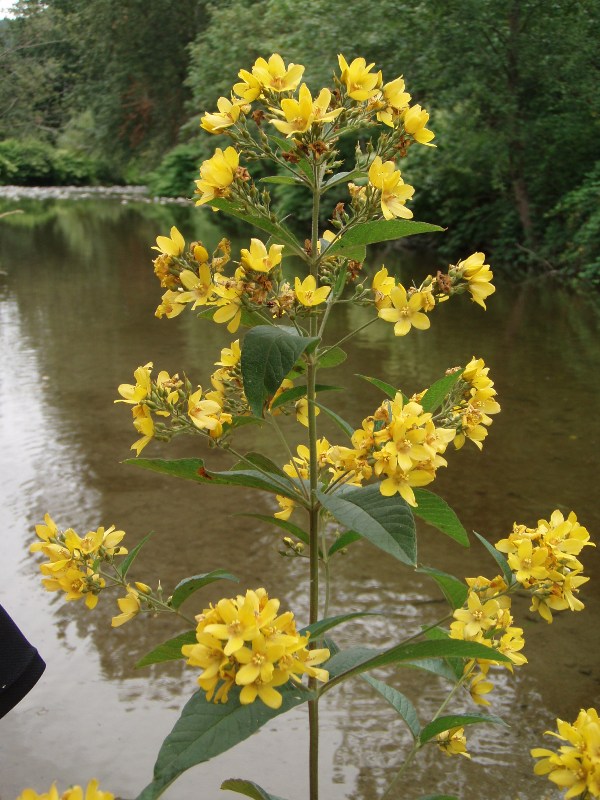
Why it's a problem
Garden loosestrife is an invasive weed that can form dense stands of growth in Washington’s wetlands and shorelines. It spreads aggressively, and its complex root system makes it difficult to remove. Garden loosestrife is a highly competitive plant. It displaces native vegetation and reduces habitat needed by waterfowl and fish, including salmon.
Plant description
Garden loosestrife is native to Eurasia and North Africa. It is an upright perennial (plant that has a life cycle of 2 or more years) often found in wetland habitats, shores, and stream banks.
Garden loosestrife grows anywhere from 3 to 6 feet tall or even taller in shade.
Its stems and leaves are both covered with fine hairs. Its leaves are opposite (connected to the stem in pairs) or whorled, lance shaped, 3 to 5 inches long, and dark matte green/olive in color.
Flowers are present July to September. They are yellow, showy, and occur in a cluster at the top of the plant. Each flower has 5 petals, they are primrose-like. Plant remains in the vegetative stage (only leaves) for some time prior to blooming. Flowers being present indicates the plant has been in the area for a few years.
It spreads via seeds and rhizomes (underground root system that spreads horizontally).

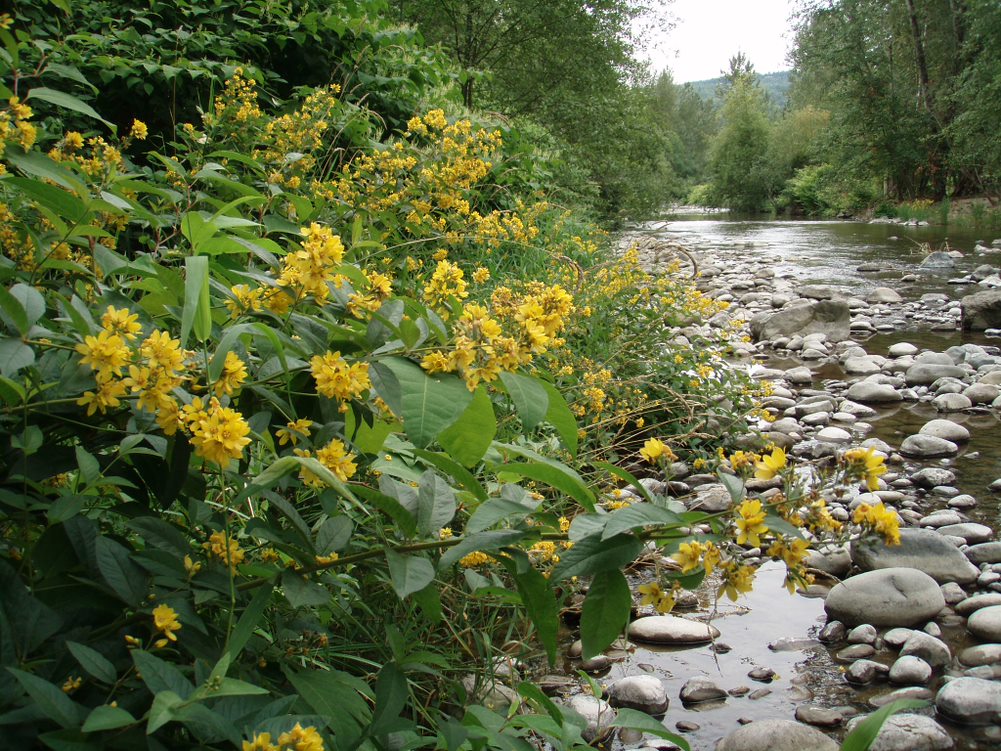
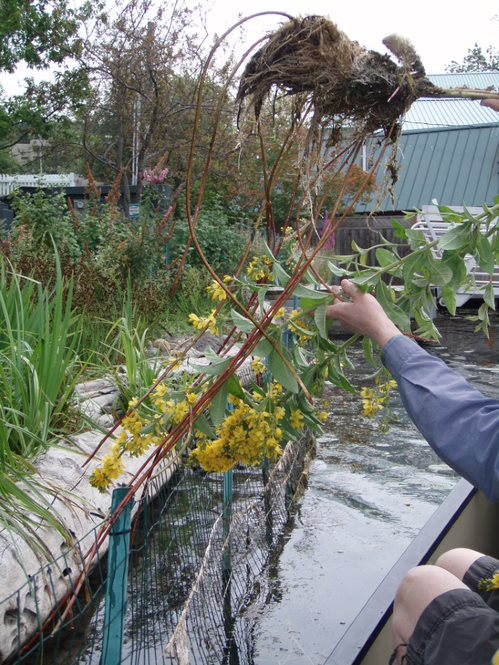
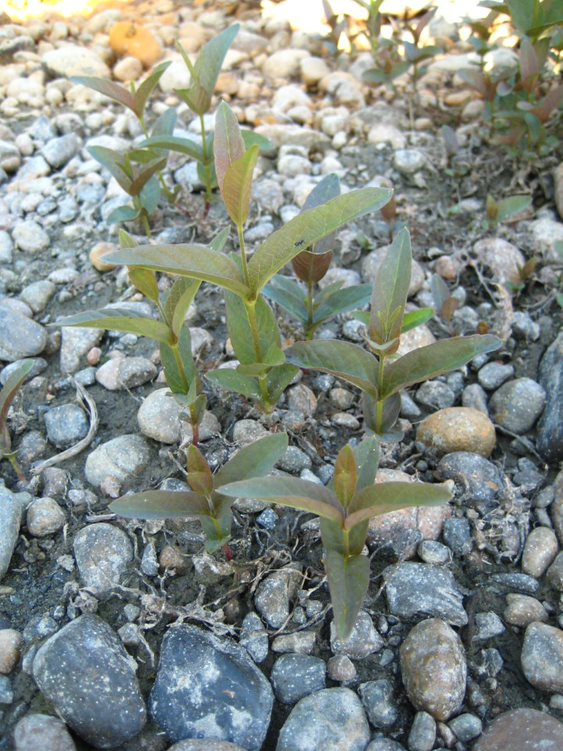
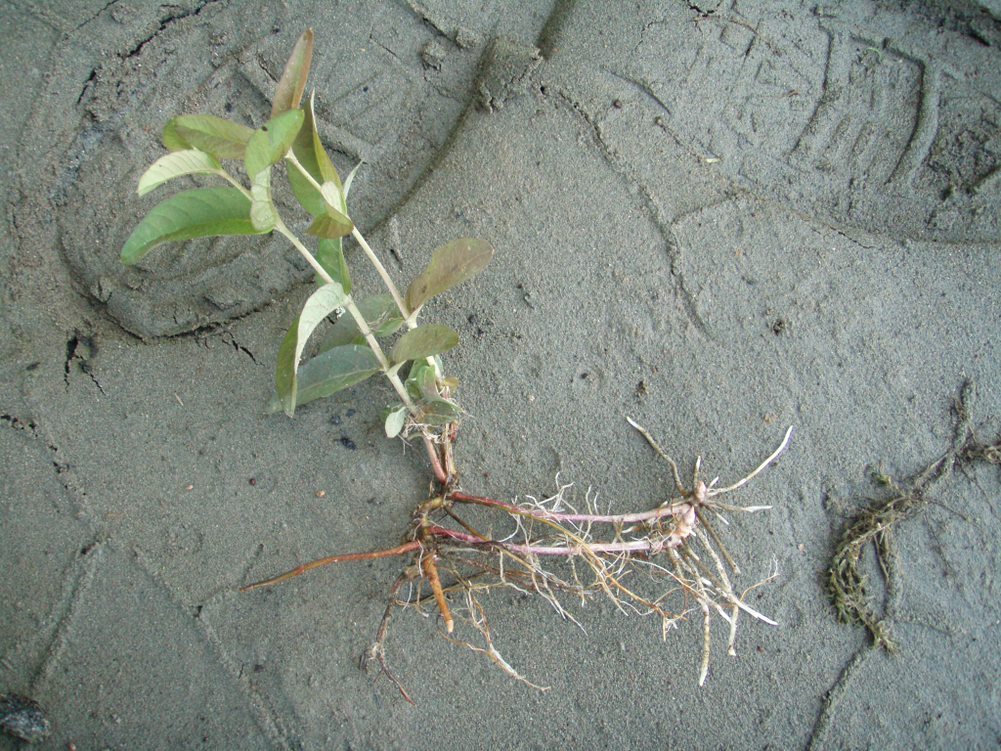
Be aware of look-alike plants
Although similar in name, garden loosestrife is not related to purple loosestrife. It is not even in the loosestrife family, but rather the primrose family. Though the two behave similarly and often are found growing nearby one another, they look very different.
Garden loosestrife does look very similar to the ornamental species Lysimachia punctata, also called garden or yellow loosestrife.
When in doubt, take photos and share them with us or report them on iNaturalist.
What to do if you find it
Please notify us if you see garden loosestrife growing in King County. Property owners are required to control this weed. Our program staff can provide you with site-specific advice on how best to remove it. We map all known locations of regulated noxious weeds in order to help locate new infestations in time to control them.
Control methods
We recommend using a combination of methods to control noxious weeds. In areas with few weeds, it is important to act quickly before they become harder to control. Make a long-term plan as it often takes several years to get rid of most weeds. Start in the least infested areas first and then move into more heavily infested areas.
For more in-depth control information, read Best Management Practices (BMP) for garden loosestrife
Manual/Mechanical control
It may be possible to dig up individual plants or small infestations. If you do, take care to remove as much root and rhizome as possible. It is likely that the plants will regrow if any root fragments are left behind, so check the area again within a few months for any new stems.
Flowering plants can be cut to prevent seed production. However, cutting or mowing by itself is not an effective long term control method because plants will grow back.
Chemical control
Stay safe when using herbicide:
- Always read the label before use.
- Wear a long-sleeved shirt, long pants, shoes, and eye protection.
- Follow state and local regulations.
Larger patches most likely will need herbicide treatments for effective control.
See the PNW Pest Management Handbook for the most up to date and specific method for chemical control of garden loosestrife.
Avoid spraying where there is a chance that herbicide will enter a waterway or wetland unless you are using a state-approved aquatic herbicide and have the required permits and licenses to do so. Use of pesticides in water is regulated in Washington state. See Washington Department of Ecology Aquatic Pesticide Permits for details.
For more information or a site-specific control recommendation, permitting information, or information on hiring a licensed aquatic weed contractor in King County, contact the noxious weed program. For information in other counties in Washington state, contact your local weed board or your local cooperative extension office.
Disposal instructions
Bag all garden loosestrife flowers, seed heads, plant parts, and roots. Discard them in the trash or take them to a transfer station. Do not compost or place in yard waste. Plants can grow from fragments and compost may not get hot enough to kill seeds. Never dump plant material because weeds may spread from yard waste piles.
Noxious Weed Disposal - Washington State Noxious Weed Control Board

 Translate
Translate